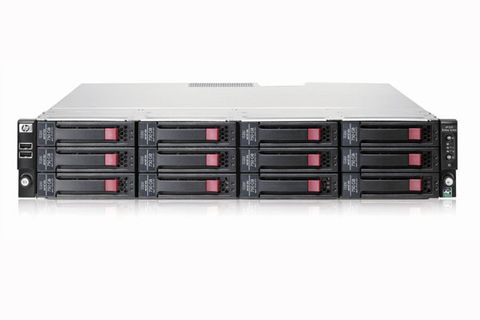Replication was set to start as soon as each daily backup job was completed and its virtual cartridge had unloaded. After each daily sequence we introduced controlled changes to the data sets at the file, database row and email levels prior to running the next backup and replication tasks.
Although we ran the initial seeding run over the 2Mbps WAN link we opted not to include these times in the overall results. Businesses are more likely to run this over a high-speed LAN connection and then ship the remote appliance out or use the tape offload feature.
On completion of the tests we found SQL Server delivered the best results. With a daily change of five per cent of data in all database rows, the one month test was completed in a total of 27 hours. Using the absolute WAN speed we calculated that without HP's data reduction, compression and LBR, this would have taken 395 hours representing a saving of 15 days.

When defining the replication target you can decide how you want VTL slot mappings with the source to be configured.
For Exchange Server we introduced a daily rate change of five per cent in all emails and saw time savings for the one month period of 11.8 days. The file server rate change was set to five per cent of data within 10 per cent of files and this test returned a total time saving over one month of 13.2 days.
HP delivered on its claimed deduplication ratios with the one month test, returning 6.7:1 for Exchange, 12:1 for SQL Server and 81:1 for the file server tests. Naturally, these would have been even higher had we run the tests for a longer period.
Our real world tests show that HP's deduplication delivers on its promises and its new LBR feature makes replication over low cost WAN links a reality. We found it very easy to deploy and use and, compared with much of the competition, the D2D4000 is a very affordable deduplication solution for SMBs.
Verdict
HP’s D2D4000 can make big savings on storage capacity and brings data deduplication within the grasp of SMBs. Our real world tests show that HP’s LBR technology makes this a reality for low-cost, low-bandwidth WAN links, making this solution well worth considering for remote site replication.
Chassis: 2U rack CPU: 2 x 3GHz AMD Opteron 2222 Memory: 8GB 667MHz DDR2 Storage: 6 x 750GB HP SATA hard disks in hot-swap carriers RAID: HP Smart Array P400 SAS/SATA RAID controller with 512MB cache and BBU Network: Gigabit Ethernet Power: 2 x 750W hot-plug power supplies Management: Web browser
Dave is an IT consultant and freelance journalist specialising in hands-on reviews of computer networking products covering all market sectors from small businesses to enterprises. Founder of Binary Testing Ltd – the UK’s premier independent network testing laboratory - Dave has over 45 years of experience in the IT industry.
Dave has produced many thousands of in-depth business networking product reviews from his lab which have been reproduced globally. Writing for ITPro and its sister title, PC Pro, he covers all areas of business IT infrastructure, including servers, storage, network security, data protection, cloud, infrastructure and services.


